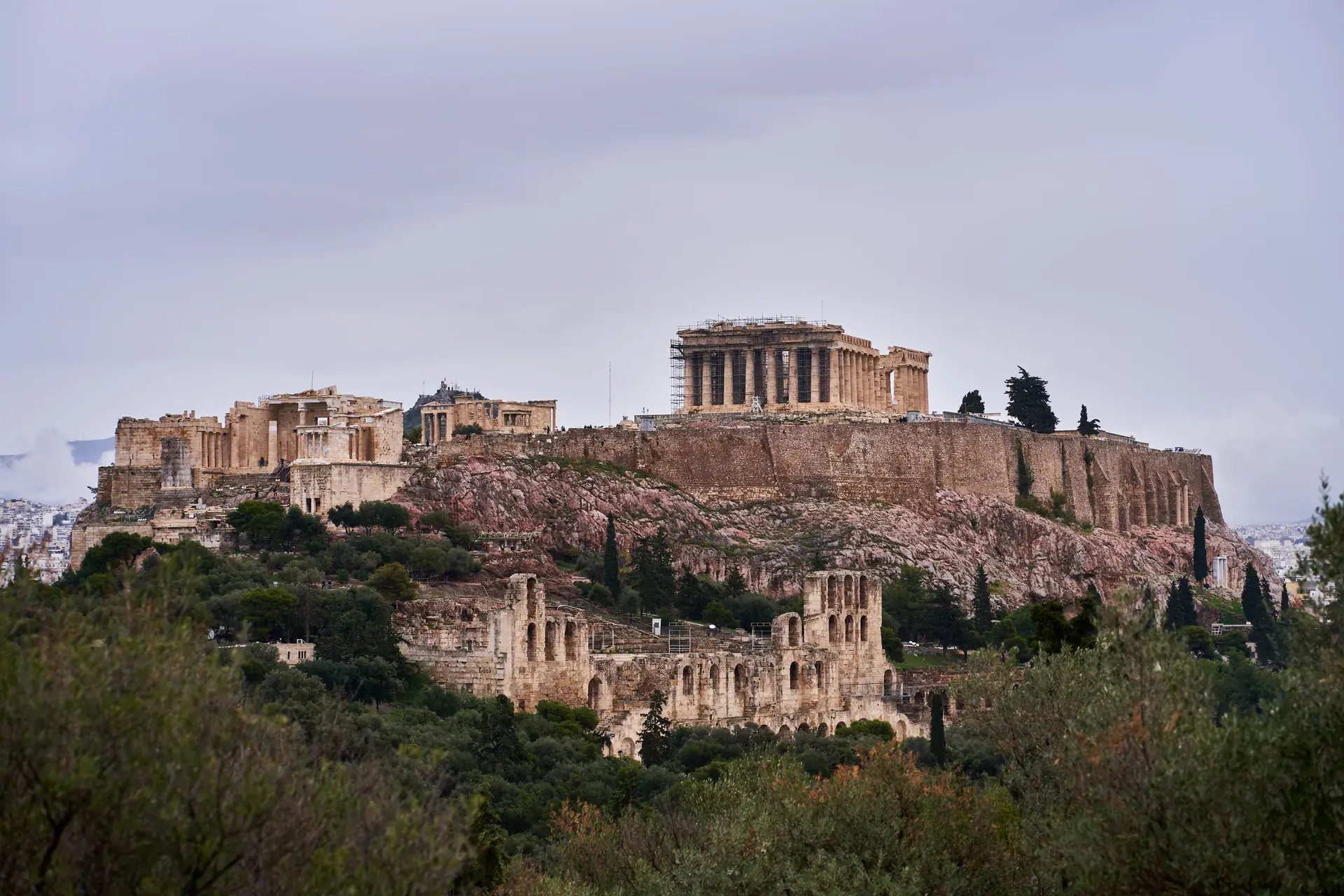
Acropolis of Athens: Parthenon & Birthplace of Democracy
Sacred Citadel of Marble Temples and Classical Greek Heritage
About This Site
Rising majestically above Athens on a dramatic limestone plateau, the Acropolis represents the pinnacle of Classical Greek achievement and the birthplace of Western civilisation. This sacred citadel houses the world's most influential architectural monuments, including the legendary Parthenon with its revolutionary Doric design, the elegant Erechtheion with its iconic Caryatid Porch, and the magnificent Propylaea gateway. Here, during the golden age of Pericles in the 5th century BC, democracy was born and the foundations of Western art, philosophy, and political thought were established. The sophisticated engineering, mathematical precision, and artistic mastery displayed in these ancient temples continue to inspire architects and scholars worldwide, making this UNESCO World Heritage site an enduring symbol of human cultural achievement.
Why It Matters
The Acropolis powerfully symbolises the golden age of classical Athens and the revolutionary birth of democratic governance, with its magnificent architectural monuments serving as the foundational inspiration for Western civilisation, artistic expression, philosophical inquiry, and political thought that has profoundly influenced human culture for over two millennia.
Architectural Masterpieces
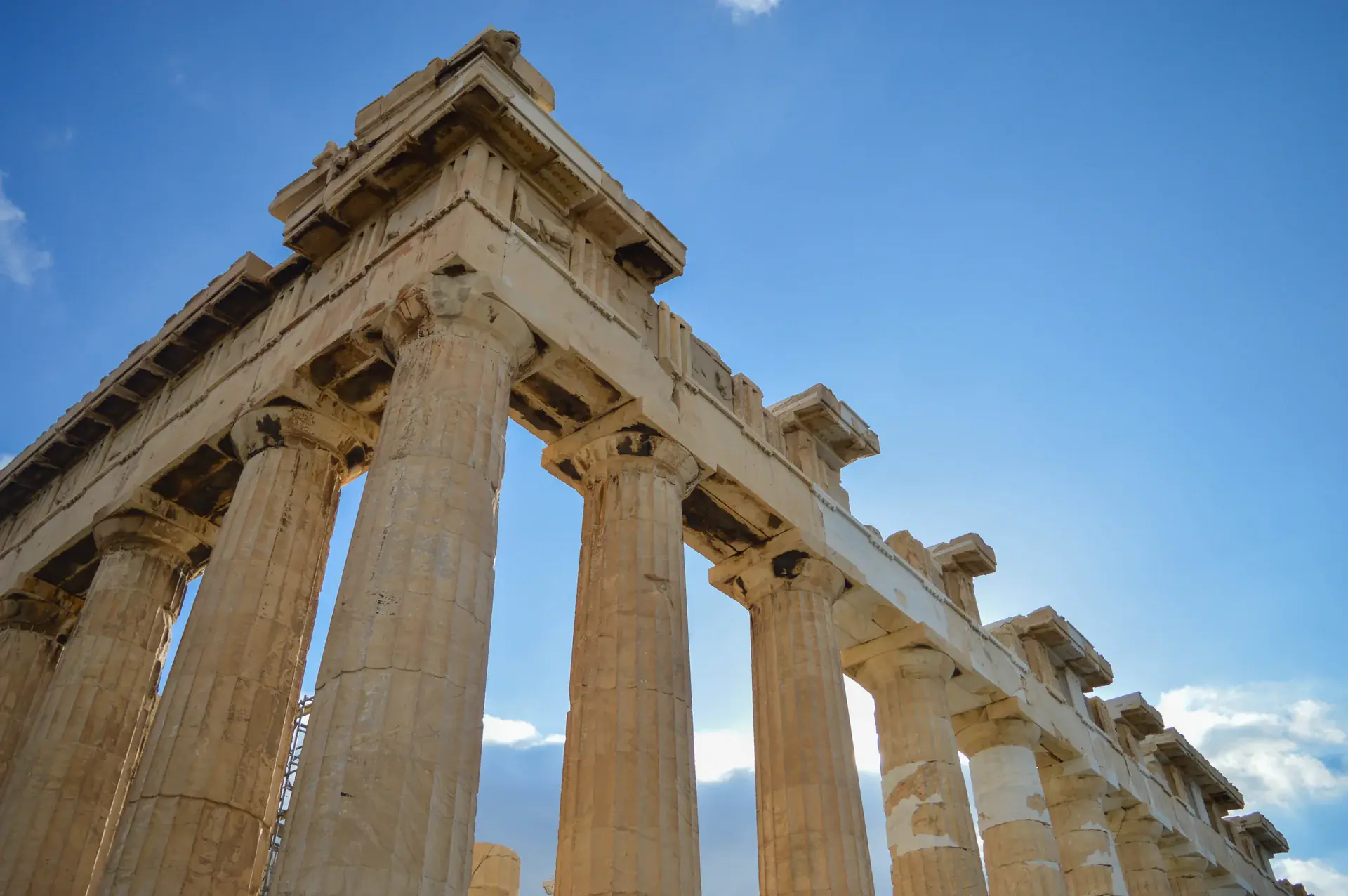
The Parthenon
The Parthenon stands as the crowning achievement of Classical Greek architecture, built between 447-432 BC during Athens' golden age under Pericles. Designed by architects Ictinus and Callicrates with supervision by sculptor Phidias, this Doric temple originally housed a magnificent gold and ivory statue of Athena Parthenos. The temple's sophisticated design incorporates subtle optical corrections—the columns lean slightly inward and have a gentle curve—creating the illusion of perfect straightness from a distance. Constructed entirely of Pentelic marble, the Parthenon originally served as both a religious temple and treasury for the Delian League.
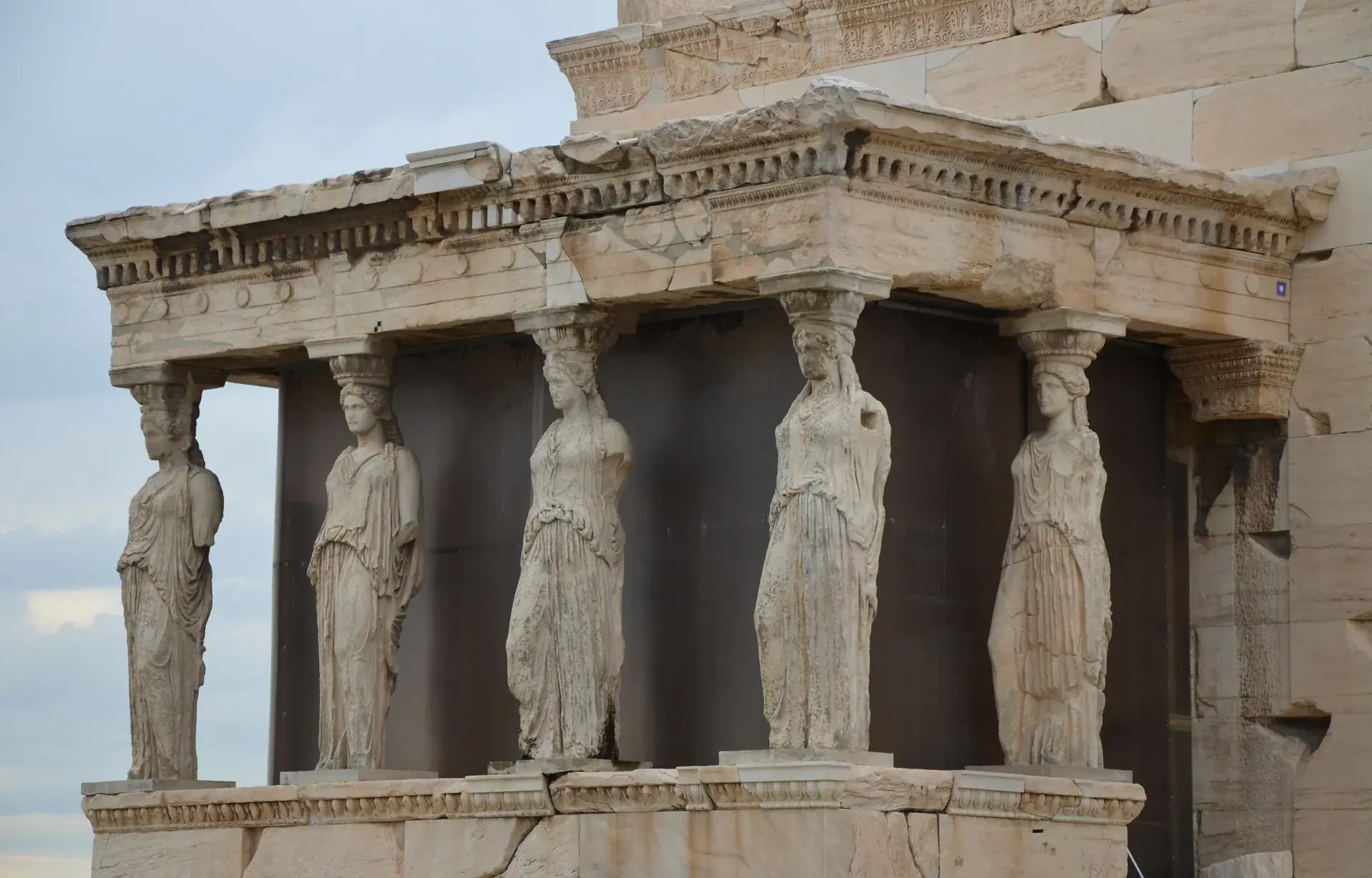
The Erechtheion and Caryatid Porch
The Erechtheion represents the pinnacle of Ionic architecture on the Acropolis, constructed between 421-406 BC during a brief pause in the Peloponnesian War. This asymmetrical temple is most famous for its Caryatid Porch, where six graceful female figures serve as architectural supports, each one a masterpiece of classical sculpture. The building's complex design accommodates multiple sacred sites, including the legendary contest between Athena and Poseidon for patronage of Athens. Built of Pentelic marble with decorative elements in darker Eleusinian limestone, the Erechtheion housed the ancient wooden statue of Athena Polias, considered the city's most sacred relic.
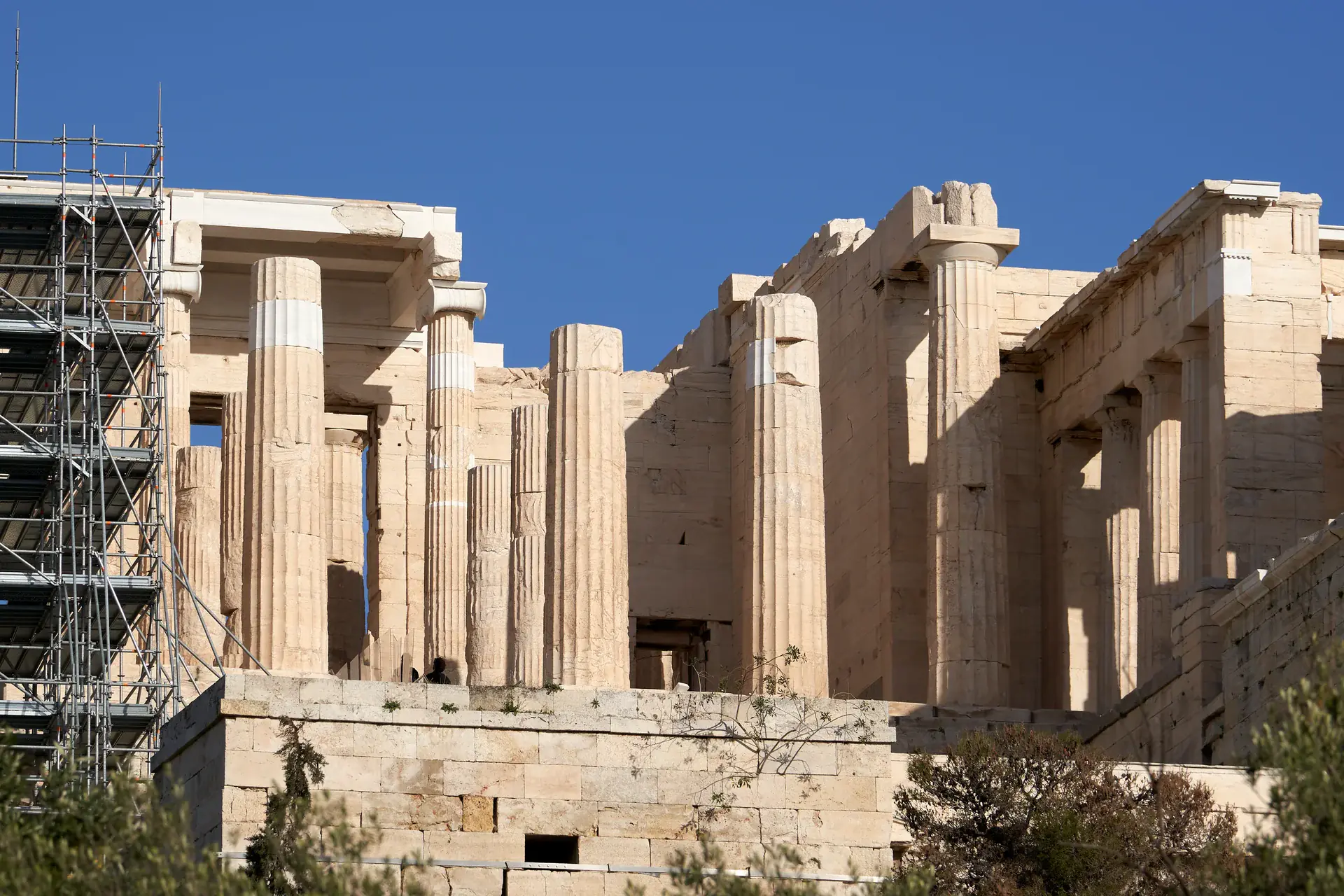
The Propylaea Gateway
The Propylaea serves as the magnificent ceremonial entrance to the sacred precinct of the Acropolis, designed by the architect Mnesicles around 437 BC. This innovative structure brilliantly combines Doric and Ionic architectural orders, featuring a central gateway flanked by two wings. The gateway was built wide enough to accommodate the grand Panathenaic procession, including chariots carrying offerings to Athena. Construction was halted by the outbreak of the Peloponnesian War, leaving the building forever unfinished yet still remarkably imposing. The Propylaea's architectural design influenced monumental gateways throughout the classical world and beyond.
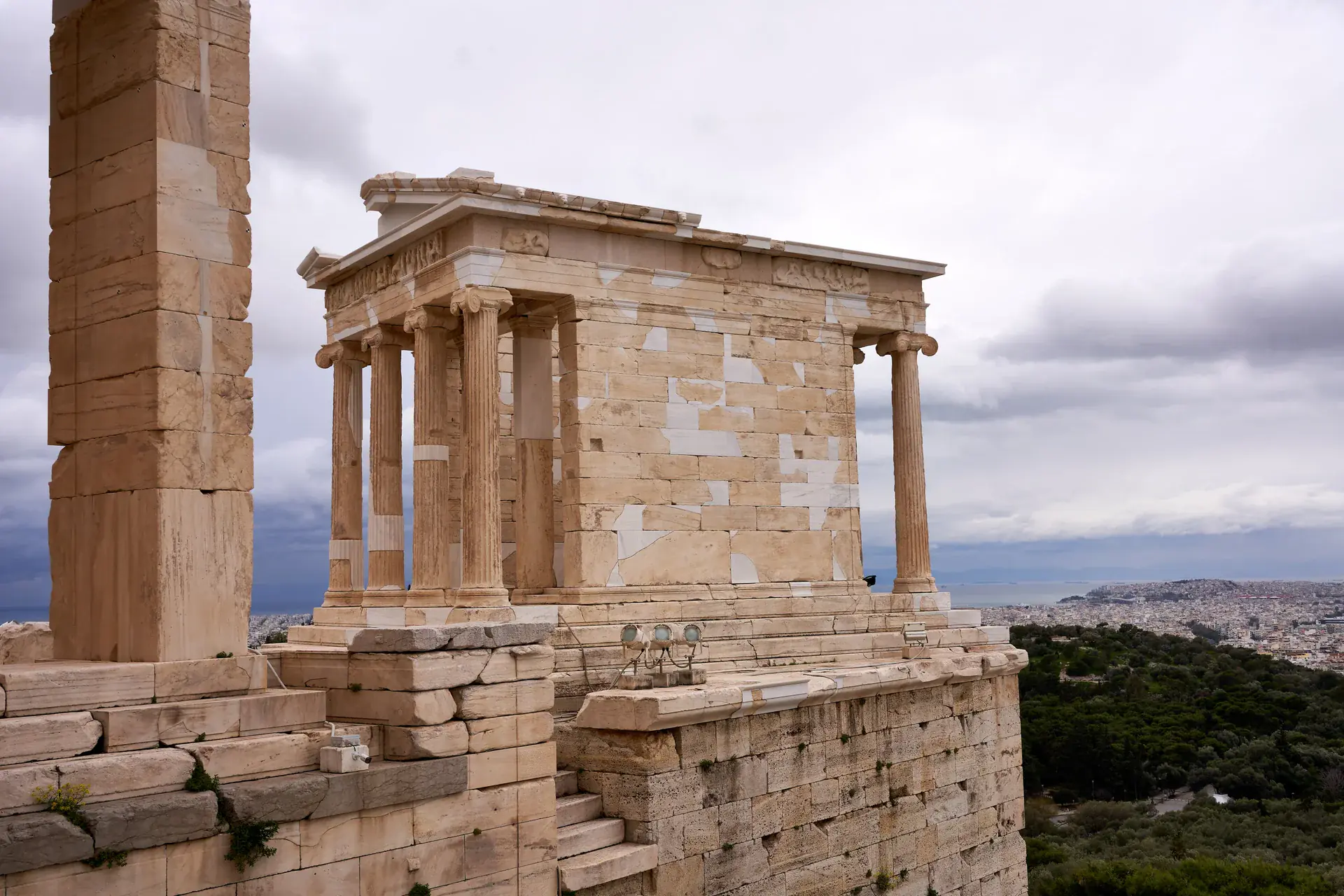
Temple of Athena Nike
Perched on a steep bastion at the southwest corner of the Acropolis, the Temple of Athena Nike is a gem of Ionic architecture built between 449-420 BC. Though modest in size at just 8 metres long, this elegant temple celebrates Athenian military victories and housed a wingless statue of Nike (Victory)—hence its popular name 'Athena Nike' or 'Wingless Victory'. The temple's position offers commanding views over the Saronic Gulf and the route by which enemies would approach Athens. Its frieze depicted battles from the Persian Wars, linking divine protection with Athenian military prowess. The structure represents the earliest fully Ionic temple on the Acropolis.
Location & Planning
Book tickets online through Greek Ministry of Culture website to avoid queues. Combined tickets include Acropolis Museum and other ancient sites. Metro station Acropoli (Line 2) provides easy access. Facilities include toilets and refreshments near entrance.
Loading map...
Frequently Asked Questions
The Acropolis is an ancient citadel on a rocky outcrop 150 metres above Athens, housing the Parthenon and other 5th-century BC temples. The name derives from Greek "akron" (highest point) and "polis" (city), reflecting its sacred significance.
The Acropolis is the entire citadel complex, whilst the Parthenon is the main temple within it. The site includes the Parthenon, Erechtheion, Propylaea, and Temple of Athena Nike. Built 447-432 BC, the Parthenon is one part of this complex.
The Parthenon was built 447-432 BC under Pericles' leadership during Athens' golden age. Architects Ictinus and Callicrates designed it with sculptural supervision by Phidias. Dedicated to Athena Parthenos, it originally housed a magnificent gold and ivory statue of the patron goddess.
Book tickets online through the Greek Ministry of Culture website to avoid queues. Wear non-slip shoes for marble surfaces and bring sun protection. Allow 2-3 hours for main monuments. Combined tickets include the Acropolis Museum and other ancient sites for better value.
April-June and September-October offer ideal weather with mild temperatures. Early morning (08:00) or late afternoon visits provide fewer crowds and better photography lighting. Summer can be very hot, while winter offers comfortable temperatures but shorter daylight hours.
Original sculptures are preserved in museums - the British Museum holds the Parthenon Marbles whilst the Acropolis Museum displays originals. Ongoing debates continue about their rightful location. Copies stand on the monument to protect originals from weather.
UNESCO World Heritage Criteria
Inscribed in 1987, this site meets 5 of UNESCO's 10 criteria for Outstanding Universal Value
Criterion (i): Masterpiece of human creative genius
The Parthenon represents an absolute masterpiece of human creative genius through its sophisticated Doric architecture featuring precise optical corrections, refined proportions encoding mathematical harmonies, and revolutionary structural engineering establishing Classical Greek architectural principles that profoundly influenced Western civilisation for two millennia.
Criterion (ii): Interchange of human values
The Acropolis facilitated exceptional interchange of human values during Classical Athens' golden age, when democracy, philosophy, theatre, and architectural innovations developed here spread throughout the Hellenistic world and Roman Empire, fundamentally shaping Western political thought, artistic expression, and intellectual traditions.
Criterion (iii): Testimony to cultural tradition
These monuments provide unique testimony to Classical Greek civilisation at its zenith under Pericles, representing the birthplace of democracy and philosophical inquiry whilst showcasing the cultural achievements that defined ancient Athens as the intellectual and artistic centre of the ancient Mediterranean world.
Criterion (iv): Outstanding architectural/technological ensemble
The Parthenon and surrounding structures exemplify outstanding architectural achievement through innovative construction techniques, sophisticated engineering solutions for building on irregular terrain, and harmonious integration of multiple building types creating a unified sacred precinct demonstrating Greek architectural mastery.
Criterion (vi): Associated with events/traditions/ideas/beliefs/artistic works
The Acropolis remains directly associated with ideas of democracy, philosophical inquiry, and artistic excellence that originated in Classical Athens, representing the birthplace of Western political systems, dramatic arts, and philosophical traditions that continue influencing contemporary society and cultural expression worldwide.
Historical Context
Archaic Period (6th century BC)
During the Archaic period, early temples, shrines, and defensive fortifications were established on the naturally elevated acropolis outcrop, with the sacred site becoming increasingly dedicated to Athena, the powerful patron goddess and divine protector of the emerging city-state of Athens.
Classical Golden Age (5th century BC)
Under the visionary leadership of Pericles following the devastating Persian destruction in 480 BC, the Acropolis underwent a magnificent rebuilding programme that created the architectural masterpieces we admire today, including the iconic Parthenon, the elegant Erechtheion, and the monumental Propylaea gateway.
Hellenistic & Roman (4th BC - 3rd AD)
The Acropolis continued its important religious function throughout the Hellenistic and Roman periods, with some architectural modifications and additions reflecting changing political powers. The site maintained its profound cultural and spiritual significance across the Greek-speaking world even under Roman imperial administration.
Byzantine and Ottoman (4th-19th centuries)
Byzantine Christians transformed ancient temples into churches. Under Ottoman control from 1458, the Parthenon became a mosque whilst the Erechtheion served as residence. The most catastrophic damage occurred during the 1687 Venetian bombardment when an ammunition store inside the Parthenon exploded.
Modern Era (19th century-present)
Following Greek independence in 1832, systematic archaeological excavation and scholarly study began in earnest, removing later Ottoman structures to reveal the classical monuments. Comprehensive restoration programmes initiated in the 1970s employ original Pentelic marble alongside advanced titanium reinforcement techniques, carefully preserving these architectural masterpieces for future generations.
Conservation & Protection
Current Conservation Status
The Acropolis monuments face significant ongoing challenges from urban air pollution, intensive tourism impact, natural weathering processes, and seismic activity, with comprehensive restoration and conservation programmes actively ongoing since 1975 employing advanced techniques.
Conservation Challenges
- Severe acid rain damage from decades of urban atmospheric pollution progressively affecting and deteriorating the pristine Pentelic marble surfaces
- Intense tourism pressure from over 3 million annual visitors causing significant physical wear on ancient marble pathways and architectural elements
- Recurring seismic activity from earthquakes in the geologically active Aegean region continuously threatening the structural stability of ancient temple buildings
- Climate change effects bringing increasingly frequent extreme weather events including intense rainfall, temperature fluctuations, and prolonged droughts affecting monument preservation
Active Conservation Efforts
- Advanced laser cleaning techniques carefully removing centuries of accumulated pollution damage and atmospheric grime from delicate marble surfaces without causing additional harm
- Titanium reinforcement systematically replacing problematic corroded iron clamps installed during previous early 20th-century restorations that caused marble cracking and structural damage
- Sophisticated visitor management systems implementing timed-entry tickets to control daily visitor numbers and carefully planned routing patterns to minimize wear on vulnerable areas
- International collaboration with UNESCO and leading conservation institutions bringing world-class archaeological expertise, advanced scientific analysis, and innovative restoration techniques to the ongoing preservation project
Image & Content Attribution
Research & Content Sources
Photography & Visual Media
Last updated: 9 October 2025